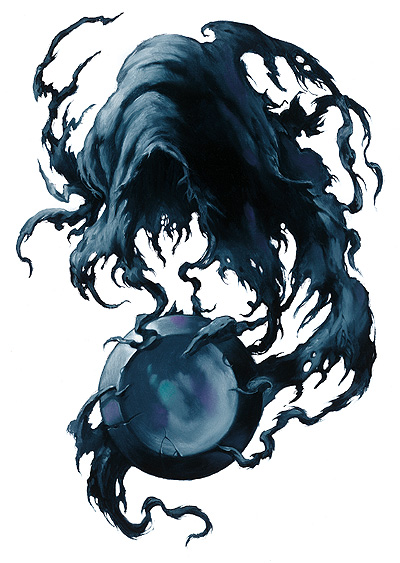


|
Northern Regions |
|
|
Alder |
Fir |
|
Balsam |
Oak, scrub |
|
Birch |
Pine |
|
Sablewood |
|
|
Central Regions |
|
|
Apple/Crabapple |
Maple |
|
Beech |
Mulberry |
|
Briar |
Myrtle |
|
Bronzewood |
Oak |
|
Cherry/Chokecherry |
Pear |
|
Chestnut |
Phost |
|
Elder |
Plum |
|
Elm |
Poplar |
|
Galda |
Roanwood |
|
Hawthorn |
Thorn |
|
Hickory |
Usk |
|
Hornwood |
Walnuut |
|
Ipp (or Ipt) |
Willow |
|
Larch |
Yarpick |
|
Locust |
Yew |
|
Southern Regions |
|
|
Apricot |
Lemon |
|
Ash |
Lime |
|
Bay |
Mangrove |
|
Camphor |
Oak, Live |
|
Cedar |
Olive |
|
Fig |
Orange |
|
Grapefruit |
Peach |
|
Gum |
Pine |
|
Kara |
Tulip Tree |
|
Southhern Tropical Regions |
|
|
Banyan |
Mahogany |
|
Baobab |
Palm |
|
Deklo |
Teak |
 ronzewood
trees are slender until after many decades of growth. The average size is
40 feet, with branches growing at a 45 degree angle from the trunk. Bark
is reddish brown and hard. Leaves are narrow and toothed, from eight to
ten inches long. The wood of this tree is heavy and hard, so that only
experts can work it properly. If it is carefully seasoned arid especially
dried, the outer part will become almost as hard as metal, while the
overall weight of the wood is unchanged.
ronzewood
trees are slender until after many decades of growth. The average size is
40 feet, with branches growing at a 45 degree angle from the trunk. Bark
is reddish brown and hard. Leaves are narrow and toothed, from eight to
ten inches long. The wood of this tree is heavy and hard, so that only
experts can work it properly. If it is carefully seasoned arid especially
dried, the outer part will become almost as hard as metal, while the
overall weight of the wood is unchanged.
Deklo trees are massive hardwoods
often 15 feet in diameter and over 100 feet tall. They have thick, strong
branches that grow almost parallel to the trunk. The leaves of the tree
are nearly round and grow in thick clumps. On a mature deklo, leaves will
be over 1 foot in diameter. These trees tend to grow in groves, excluding
other forms of vegetation.
Galda trees are large fruit-hearing trees, 30 feet or so in height. Bark
is yellowish and leaves are yellow-green. In early spring the tree
produces whitish, cone-shaped fruit which ripens to gold-streaked maturity
in early summer. Galdas are somewhat astringent and salty to the palate,
but the fruit is both refreshing and nutritious, as its multiple seeds are
high in protein.
Kara trees are large fruit trees. Karas grow to a height of 40 feet or
more, have rough bark, and their branches and leaves produce an irritating
resin which causes itching. Kara produce fruit throughout the entire
Summer. This fruit is light brown in color; spots of yellow indicate that
the fruit is new, red shows full ripening. Karafruit is about fist-sized
and oddly squarish. Unripe, they are putrid-tasting and cause severe
cramps if consumed. Ripe fruit is chewy and somewhat sweet. It provides a
staple in the diet of many people.
The Hornwood is a beautiful hardwood about the size and shape of a small elm. Its trunk and branches usually are very straight, with black bark. Leaves are long and pointed, resembling the broad blade of a spear. If properly treated and seasoned, hornwood becomes especially strong and resilient. Weapons, especially bows made of hornwood are much desired.
Ipp trees are among the largest known. They average 60 feet or more in height and have thick trunks. The ipt, a species of ipp, is larger still, and is a favorite of Sylvan Elves. Ipps have greenish bark and large, hand-shaped leaves of emerald green. These trees will live for centuries and are seldom attacked by insects or disease.
Phost tress a similar to oaks, except their bark is quite shaggy and leaves are twice as broad as they are long. The wood of the phost gives off a soft glow when it has been dead for a year or so. This radiance is sufficient to light a 5-foot radius around a branch or rotting phostwood trunk. Rough handling or exposure to dampness hastens the rotting process, so that the wood will crumble away in a few months.
Roanwood trees are similar to sequoias, except that the branches are closer to the ground (30 feet or so) and far larger, for the roanwood is a hardwood. As the name implies, the bark of the tree is speckled gray and reddish-brown. Specimens over 150 feet tall have been found. Roanwoods have fan-shaped leaves about 1 foot long. The wood and grain of the tree are such that it is used for fine furniture, interiors, or carving. Where hardness and strength are desired, hickory, bronzewood, oak and like woods are typically used.
Sablewood trees are an evergreen found in northern regions. The trees are short and have thick trunks for their size. Their branches make excellent arrow shafts. The trees forested in cold months have the finest grain, and if they are treated with oil, the wood becomes a lustrous black.
Usk trees are very thick, tall
hardwoods with huge oblong leaves and an edible fruit much loved by most
creatures. Typical specimens of usk are 8 to 9 feet in diameter and 50 to
60 feet tall. The tree is similar to a maple in shape. The huge leaves are
tough and flexible, so they can be used for many purposes. Uskfruit
appears in early summer and stays until frost. It is pale blue with three
or four lobes. A ripe uskfruit is about the size of a large grapefruit,
bright blue, and aromatic.
The yarpick is commonly known as the daggerthorn. It is a shortish, sturdy
tree with low, spreading branches and broad, fringed leaves. Its trunk has
relatively small, exceedingly sharp thorns about one-half foot long.
Thorns on its larger branches can be awesome, the largest growing to over
two feet in length and as thick as a finger at the base. Yarpick thorns
are tough and straight and have been used as weapons or weapon components.
The mature tree bears small fruit which is not useful, but the inner seed
is quite good when cracked as if a nut. Cultivated yarpick
"nuts" are as large as plums and very wholesome and nourishing.
The meat is eaten roasted or ground into meal.